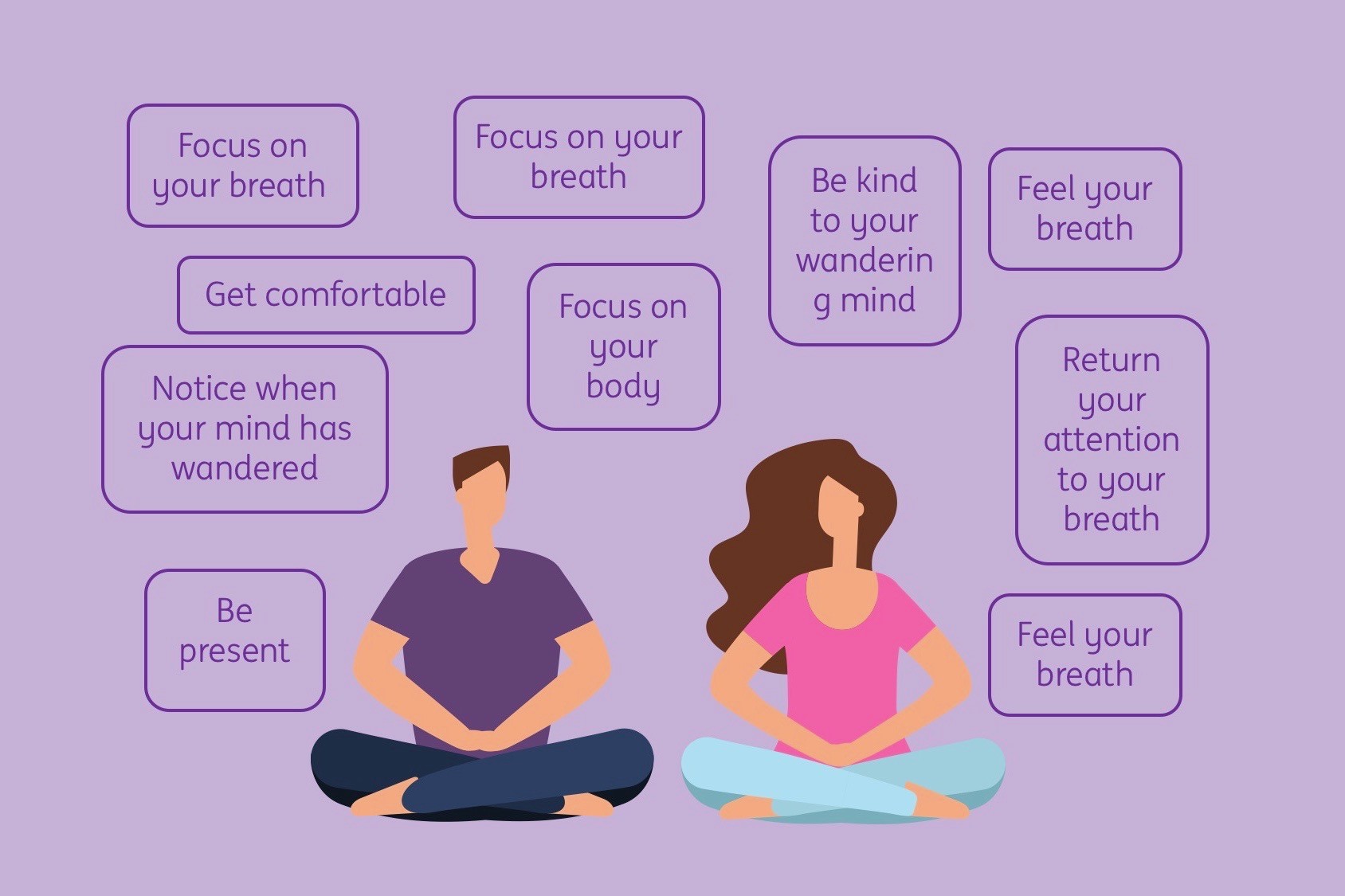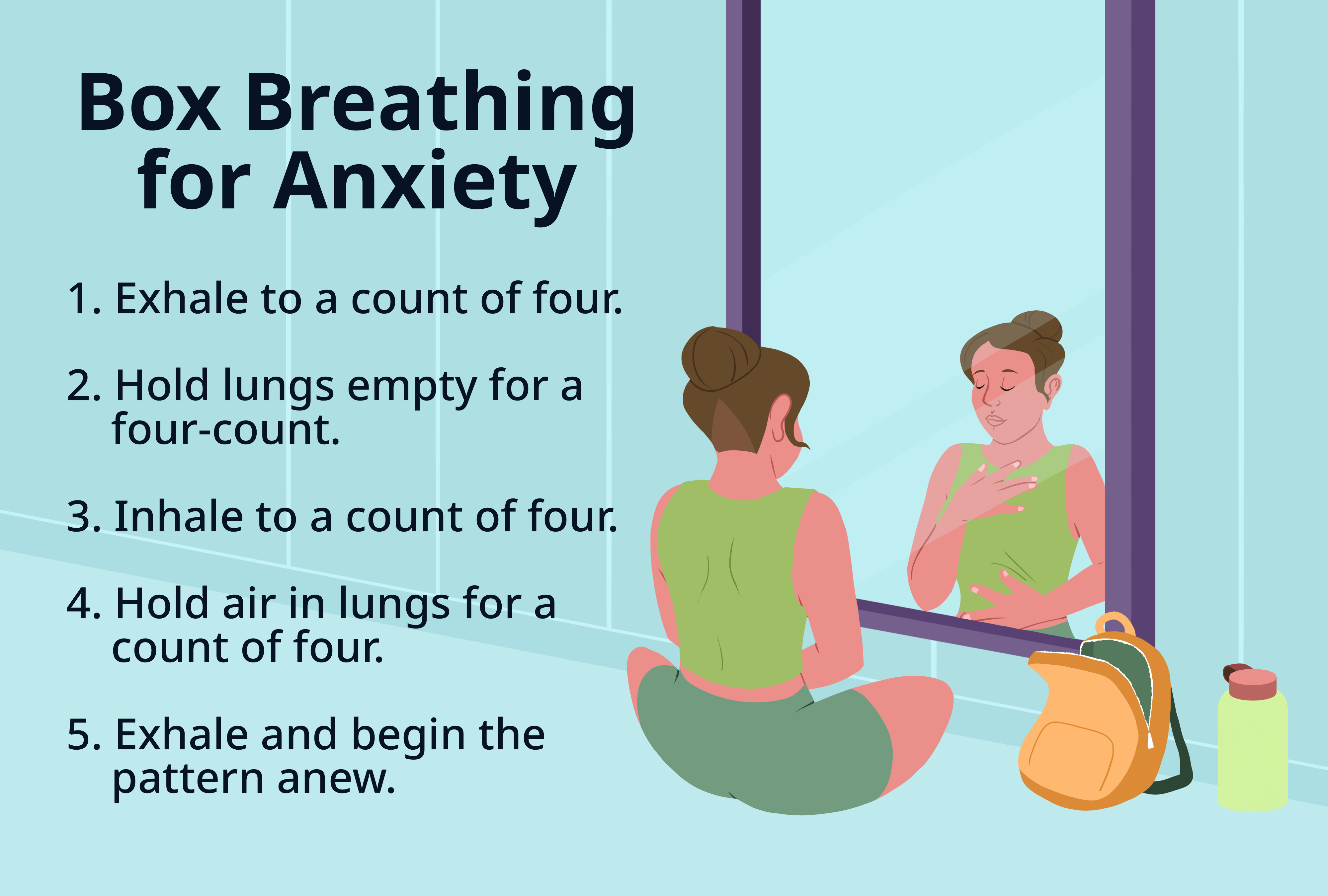Anxiety can be overwhelming, but simple breathing exercises offer a powerful tool to regain control and find peace. By focusing on your breath, you can activate your body’s relaxation response, reducing stress and promoting mental clarity.

Understanding the Connection Between Breath and Anxiety
When anxious, our breathing becomes shallow and rapid, signaling the body to stay in a heightened state of alert. Conscious breathing techniques counteract this by slowing the heart rate and calming the nervous system.
Effective Breathing Techniques for Anxiety Relief
1. Box Breathing
Box breathing, also known as four-square breathing, involves equal parts inhaling, holding, exhaling, and holding again, each for four counts. This method helps regulate the autonomic nervous system, promoting a sense of calm.1
How to Practice:
- Inhale through your nose for 4 seconds.
- Hold your breath for 4 seconds.
- Exhale through your mouth for 4 seconds.
- Hold your breath for 4 seconds.
- Repeat the cycle for several minutes.
This technique is particularly useful in high-stress situations and is used by professionals like Navy SEALs to maintain composure.
2. 4-7-8 Breathing
The 4-7-8 technique is designed to reduce anxiety and help with sleep. It involves a specific pattern of inhaling, holding, and exhaling.
Steps:
- Inhale through your nose for 4 seconds.
- Hold your breath for 7 seconds.
- Exhale through your mouth for 8 seconds.
- Repeat the cycle up to four times.
This method slows the heart rate and calms the mind, making it effective for managing anxiety and promoting restful sleep.

3. Diaphragmatic Breathing
Also known as belly breathing, this technique focuses on engaging the diaphragm to take deep, full breaths.Verywell Mind
How to Practice:
- Sit or lie down comfortably.
- Place one hand on your chest and the other on your abdomen.
- Inhale deeply through your nose, ensuring your abdomen rises more than your chest.
- Exhale slowly through pursed lips, feeling your abdomen fall.
- Continue for several minutes.
This technique increases oxygen intake and promotes relaxation.
4. Alternate Nostril Breathing
A practice rooted in yoga, alternate nostril breathing balances the left and right hemispheres of the brain, reducing stress.
Steps:
- Sit comfortably and close your right nostril with your thumb.
- Inhale through your left nostril.
- Close your left nostril with your ring finger, release your right nostril, and exhale through it.
- Inhale through your right nostril, close it, and exhale through your left.
- Continue alternating for several cycles.
This method calms the mind and improves focus.

Incorporating Breathing Exercises into Daily Life
- Morning Routine: Start your day with a few minutes of diaphragmatic breathing to set a calm tone.
- Work Breaks: Use box breathing during short breaks to reduce stress.
- Evening Wind-Down: Practice 4-7-8 breathing before bed to promote relaxation and better sleep.
Conclusion
Breathing exercises are simple yet powerful tools to manage anxiety and promote relaxation. By incorporating techniques like box breathing, 4-7-8 breathing, diaphragmatic breathing, and alternate nostril breathing into your daily routine, you can enhance your mental well-being and navigate stress more effectively.
Team Active Lifestyle Diary is a group of passionate wellness enthusiasts, writers, and digital explorers dedicated to helping people live healthier, more energized lives. From fitness tips and nutrition guides to mental wellness and daily motivation — our goal is to inspire a balanced, active lifestyle through honest, research-based content.
Follow us as we turn everyday habits into long-term wellness!


